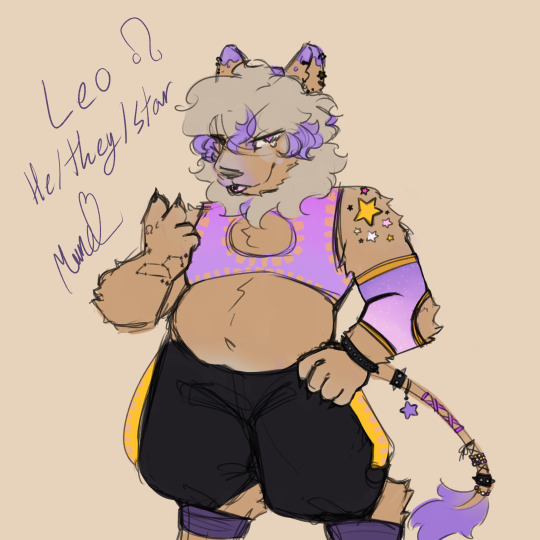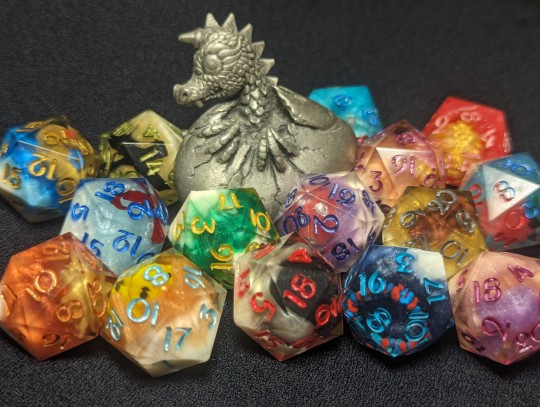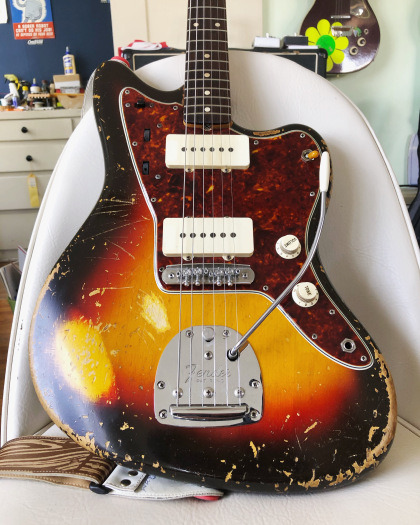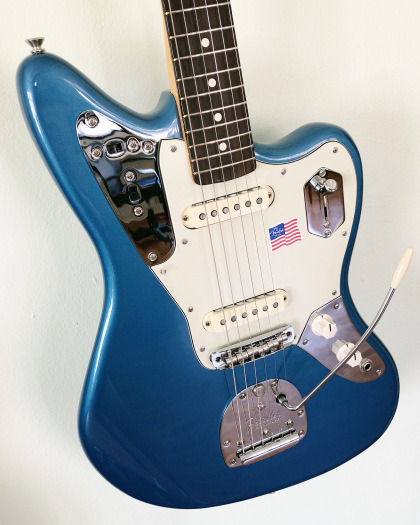#Leo was an adopt I redesigned! :D
Text


Hey! I'm working on a new tarchivist piece, and have a plan for a sort of interactive comic based around an AU Tim too, but they're gonna take a little while in between commissions and other life things. I offer some new ocs of mine in hopes they will suffice until I can keep getting big pieces out :] Thanks to everyone who comes to my blog for your support!!
#my art#digital art#artists on tumblr#ocs#my ocs#Leo [OC]#Leo was an adopt I redesigned! :D#and the alien catgirl doesnt have a name yet..#but im thinking about it#:]!!#the mouse's drawings#thank you all sm once again
6 notes
·
View notes
Text
YIPPEE I HOPE EVERYONE HAD A GREAT HOLIDAY SEASON AND HAS A HAPPY NEW YEARRRRR!!!!
I have a lot of art resolutions that I wanna get through this year so I figured I would share them with all of you… VIA BINGO CARD!!

Bingo card inspired by AlmaKRowan on Twitter/X!!
List and explanations below the cut!!

Architecture: I want to learn how to draw buildings, rooms, etc.!!
Adopts: I want to make adopts!!
KOI character refs: Reference sheets for the characters in my story “Knights of Irene”!!
ArtFight: I’m gonna aim for 20 attacks/revenges, but we’ll see!!
GraVT piece: a group picture of the indie VTuber group I’m in, GraVT!!
Animated Illustration: I’VE BEEN WANTING TO DO THIS FOR YEARS MY TIME IS NOW
Animal studies: learn how to draw animals better
PNGtuber+ comm: I made one for myself (see it HERE) but I want someone to commission me for one >:,(
VTuber redesign: potentially maybe redesign my VTuber (even tho I literally just killed myself making the PNG+ model but WHATEVER IM ON DRUGS IG)
Leo TOTIKFR animatic: animatic for my OC Leo to the song “The Only Thing I Know For Real” by Tyson Yen
Digital painting: IVE BEEN WANTING TO LEARN HOW TO DIGITALLY PAINT/RENDER BUT I CANNOT WRAP MY HEAD AROUND IT BUT I WANNA TRYYY
Holiday YCH: YCH comms for major holidays!!
Snow Fairy MAP: I have a part in @jurygarroth’s Snow Fairy MAP so I need to get that done :D
Art Prints: I WANNA SELL ART PRINTS RAHHHHHHHHHHHHHH
Bug studies: I wanna learn how to draw bugs :3c
OC sticker sheets: I wanna make (AND SELL) sticker sheets of my OCs (and maybe other fandom characters like MLP and stuff!! We’ll see.)
RP movie posters: movie poster style illustrations of my active role plays!!
DTIYS: I WANNA MAKE ONE AND PEOPLE PARTICIPATE PLZZZZ 😭😭 JUST ONE PERSON PLZ I BEG
Emotes: re-do my twitch/discord emotes
Sell canvases @ gallery: I have an art gallery in my town that I wanna apply for and sell some irl artwork!!
YCH comms: more YCH comms!!
Lobelia lore animatic: lore animatic for my VTuber
Pose studies: learn how to draw poses better
KOI cover: book cover for “Knights of Irene”
Abaddon Webcomic: this is a HARD maybe, but I’ve tried to make this webcomic happen 2 or 3 different times and I always got sick and tired of it before I got ANYWHERE with it. I think if I take it in more of a mini comic approach like Shen or Merryweather!!

There are a few more ideas I had that I didn’t put on my bingo!!
Leo’s Final Form: conceptualize Leo’s final form and draw the finalized version
Backgrounds: get better at drawing backgrounds
Foliage: get better at drawing foliage
Color Theory: learn color theory
Interesting shading: play around with colors and shade with different colors perhaps to make it pop?
Aphmau art: draw more Aphmau art
KOI: Finish planning out KOI and potentially start writing it? It’s not art in the sense of it being written not drawn but whatever I wanna do this
Commissions: keep doing commissions! I wanna try to do at least 20 this year 👉👈
Art trades: do some art trades with people outside of ArtFight!!
Art raffle: do an art raffle 🧍
Draw my FRIENDSSS: I WANNA DRAW MY FRIENDS WAHHHHHHHHHH
GET HIRED BY YORUNOMACHI: *on my hands and knees sobbing, begging, throwing up*
Do Aphtober/Cringetober/some form of tober AND FINISH: I doubt I’ll finish lmfao
Make OC profiles on UnVale: it’s like toyhouse but it doesn’t make me want to kms when using it
Learn VTuber Rigging: I just wanna know how to do it :3

Anyways I’m sure there’s more but this is just a list of everything I can think of off the top of my head! A week from now I might decide to not do any of this LMFAO! But we’ll see how much I actually do this year!! Yippee!!
Happy new year everyone!!
#anyways yeah I totally recommend that anyone does this bc I think it’ll be fun!!#if I don’t know what to draw I can just check my bingo card and pick my poison :3c#art#2024 resolutions#art bingo#bingo card#text post
5 notes
·
View notes
Text
The eggs are home!! Well, two of them, but Phil's kids are home!!
I did a big redesign on the QSMP Eggs dice collection a while back, but then Everything Happened. And with the fate of the project and characters unsure I wasn't motivated to do anything about it really. But now, it looks like they're able to bring the eggs back, and I'm so hyped to see them again.
So, what did I work on before all that happened? I completely redid the designs for Sunny, Em, and Pepito. The initial designs worked well for who they were when they first showed up, but they grew and changed so much since then, and I wanted to honor that in their dice. Sunny's 'Girlboss' keeps her gold sun and orange numbers but now has copper as her backing color. Empanada's 'Baker' has a the same peach backing color but now with a cute pink iced cupcake and pinky-purple numbers. And Pepito's 'Small' keeps the red backing but now with pale pink numbers and a mini bag of popcorn. I had to sculpt the piece for it and it was so worth it.


And I added a design for 춘식/Chunsik called 'Traditional' that I truly love. It's got such a fun color combo. The red and blue beads are strung by hand on a little thread. they're backed with dark indigo and have turquoise numbers.
The old designs for the trio are still available but just by special request. And with Lullah's new adoption certificate and new sign color, I'm wondering ... should I change her design too? Not much, the pink with the purple music note still works swell, but should I change the numbers from magenta to plum? I'd change it to dark purple but I use that for Leo already. I could change the music note as well to make it work, maybe a black music note with dark purple under it and light purple numbers? Or would it look too much like Leo's? There's a lot of options I could do if it's wanted.

As per usual all my dice are up at my etsy shop. And I do take requests if someone has a fun idea. :D
1 note
·
View note
Text

A bad guitar, 1961
In a recent interview with Reverb.com, Fender CEO Andy Mooney laid bare his true feelings about the Jazzmaster and Jaguar, and let me tell you, they were anything but glowing. In the exchange, he brands Leo Fender’s original designs as “not very good guitars” at the time of release, declaring the mistakes of the past fixed in Fender’s latest entries into the offset line.
Mooney takes a hard stance here, but to be honest his perspective here is nothing new. These critiques have been around for years, and even with the informed views of dedicated users of the Offset Guitar forum, the main axe associations with high profile players like Chris Stapleton and Nels Cline, and my own work over the last decade advocating for the guitars in print and performance –– pardon the horn tooting –– opinions on these fascinating guitars among the general populace are still very much divided.
I don’t blame folks for holding these opinions because even I, Dear Reader, once believed the very same things. Back in high school I had an Olympic white Japanese Jaguar, a parental purchase spurred on by my love of the band Bush. The kindest way I could describe the guitar is problematic; the strings skipped off of their saddles, the bridge shimmied down, and it would not stay in tune no matter what I did.
Eventually I traded it in on something more reliable, unwilling to wrestle with the instrument. When I finally came back to the offset guitar 14 years later, I realized that insatiable tinkerer Leo Fender wouldn’t have released a guitar he didn’t think was ready, and so I pushed through my preconceived notions of its flaws to gain a better understanding of the thing. I came out on the other side with a deeper appreciation for the man’s work.
It seems to me that when a player has a bad experience with these guitars, it’s often because they’ve been poorly maintained. In cases such as these, I view it as an opportunity to educate and reevaluate. After a conversation or a quick adjustment, the player might still decide the models aren’t for them, but more often than not they seem to “get it.” And that’s enough for me.
So here I am, returning from an extended hibernation like a grumpy, shaggy bear; like the aging ensemble cast of a ‘90s sitcom, lured into a reunion for the cameras by the dangling carrot of a handsome payday, each secretly knowing that the end product would not be nearly as good as the show’s initial run; like a cherished childhood movie that, upon re-viewing for the first time in 30 years, has way more adult themes than your young mind could then comprehend, causing feelings of retroactive discomfort because you watched it with your parents in the SAME ROOM???
Prodigal namesake that I am, I have returned with my proverbial pen pressed to the also proverbial page of the Guitar Bar website to feverishly scrawl this open[ish] response in an attempt to give some context and gentle rebuttal to his comments.
“They were not particularly good guitars when they were first introduced.”
When the Jazzmaster and Jaguar were first released in 1958 and 1962 respectively, they were not only top of the line models, but top sellers as well. While neither model was exactly embraced by the Jazz community, they nonetheless found favor with a varied group of players and all but defined the sound of Surf music while still in its infancy. For a time, they seemed to be everywhere. Admittedly, perceived popularity does not a good guitar make, so let’s look at a handful of early adopters.
At first, session players and country pickers liked the models well enough to use them on stage and in the studio, including Wayne Moss, Hank Garland, Willie Nelson, and Luther Perkins, who has an engraving of the model on his tombstone. If more proof is needed, here are three separate performances of Roy Clark absolutely shredding “12th Street Rag” on a bone stock Jazzmaster and Jaguar. These videos remain favorites of mine because they show someone really digging in and playing fast melodic runs on guitars that people seem to think can’t handle that kind of vigorous right hand technique.
But if they were so good to begin with, why did sales eventually taper off?
A refinished ’65 from a couple of years back. I actually put the stock bridge back on this one instead of the sloppily installed TOM. It was awesome.
Previously, I’ve explained that the most common complaints with the model aren’t the fault of the design, but rather, trying to make that design do things it was never intended to do: wearing a set of light gauge strings. In the Jazzmaster, Leo Fender’s intention was to appeal to Jazz guitarists by creating a solid body guitar with the string geometry of an archtop: a pitched-back neck, a floating bridge, and a tailpiece, and most importantly, all specifically designed to work with heavy gauge flat wound strings. We’re talking 12s, 13s, and 14s.
Once lighter gauges (9s and 10s) became the norm in the early to mid 1960s, inadequate string tension reduced the downward force on the bridge, resulting in tuning problems and string skipping. It’s like going off-roading with bald tires: you can certainly do it, but expect to slide around a bit.
At this point in my career I’ve set up well over a thousand of these guitars over the course of my career, and in the overwhelming majority of cases, once you throw on a set of 11 gauge rounds and shim the neck as Leo intended, they just work. They were good guitars then, and they’re still good guitars today.
For more information on setting up these guitars, have a look at our Demystifying series and my May 2017 cover story for Premier Guitar.
“We’ve made them functionally better”
It’s true that Fender has devoted a significant amount of time and resources into solving the perceived problems with these guitars, including modified vibrato positioning, redesigned bridges, strategically placed nylon bushings, and even neck pockets angled at the factory to eliminate the need for shims. These are all good ideas, a few even great; as is often the case when chasing mass appeal, some have not been as successful as Fender might have hoped.
Take the Classic Player, which features an angled neck pocket and an Adjust-O-Matic bridge yet can still fall prey to the same string path issues of more vintage-correct models. The AOM style bridge was not designed with a vibrato in mind, with sharp, shallow saddle slots that can cause tuning problems of their own. And that’s to say nothing of the mismatched 12” radius bridge on a 9.5” neck, which causes the E strings to be higher off of the fretboard than the D and G in the middle and makes for an inconsistent feel across the neck.

My friend Brian’s wonderful later model MarrGuar. An amazing guitar that set up beautifully.
Mooney specifically mentions the Johnny Marr model –– indeed a killer guitar –– yet it’s worth noting that many of the earliest of the bunch left the factory with 56mm bridge string spacing, which turned out to be only a hair slimmer than the width of the neck. Many players reported problems keeping the outer strings on the fretboard, which eventually led to Fender adopting slimmer 52mm spacing in later production runs (linked in case you need one). Here’s a shot of a lovely black one with the worst example of this I have yet to see.
#gallery-0-5 { margin: auto; } #gallery-0-5 .gallery-item { float: left; margin-top: 10px; text-align: center; width: 33%; } #gallery-0-5 img { border: 2px solid #cfcfcf; } #gallery-0-5 .gallery-caption { margin-left: 0; } /* see gallery_shortcode() in wp-includes/media.php */
Scroll to see the neck and bridge string spacing problems.
A too-wide bridge…
…causing the E strings to fall off the neck when fretted
Strangely, the earliest American Professionals which came a few years later had the same problems, sometimes necessitating the need for aftermarket parts and prompting another mid-run update.
As for the new American Ultra guitars, they may not be for me but I can understand why many of the features might appeal to other players looking for a more modern take on the Jazzmaster. With an additional lead circuit control knob, a re-purposed rhythm circuit layout for out of phase operation, rollers for individual pickup volumes, and an S-1 switch for series options, it could be argued that functionally they’re more complex than ever.
However, once agin Fender curiously employs a mismatched bridge radius, this time a 9.5” bridge mated to a compound 10-14” radius neck, which puts the D and G strings higher off of the fretboard than the Es. Generally, compound necks work best when the string path is treated as a cone, flattening as it expands. In this case, a 16” bridge radius would set up far better than that of the stock part. I suspect we’ll start seeing even these guitars sporting alternative bridges before too long.
So yes, while it’s good that we’re seeing R&D dedicated to making adjustments, some of those adjustments haven’t actually solved the problems, but rather, changed the nature of them instead.
“Now you can actually play them.”
I’ve made this point abundantly not only in this piece but in nearly everything else I’ve done over the years, but the fact is that Jazzmasters and Jaguars were always playable –– stock bridge included. Take it from an ardent Mastery user: the original bridge is as viable as any other, and once it’s adjusted correctly it’s as fun as it is functional.
Not only is there a wealth of great music made with them over the years as proof, you can refer to articles on this blog, numerous posts on both my personal Instagram as well as Mike & Mike’s showing that the stock bridge is dependable and musical. Hell, every offset guitar the shop sells goes through the same setup process to show off what incredible instruments they can truly be with just a little extra effort.
Closing Arguments
Would you play this stripped ’61, original bridge and all? It was a total beast of a guitar.
Real talk: I get that Mooney’s comments may be a marketing tactic to steer customers toward the current lineup in the Fender catalog, and just in time for the holidays at that. You know the old song and dance: newer is better! Fender does make a great guitar and innovation can be a good thing, so to this I say, fair play.
Still, I have to believe there’s a better way to say so without throwing heritage –– and our beloved vintage instruments –– under the bus.
You see, over the last five or so years, it seems to have become fashionable in Fender’s corporate culture to downplay or outright disparage the legacy of Leo Fender, with reps at NAMM overheard saying things like “Leo didn’t get everything right” and “we fixed his mistakes,” phrases repeated at the onset of the latest feature set or spec tweak.
At best, comments like those in the previous sentence (as well as those which are the basis of this response) make Fender seem out of touch, and at worst, could erode the trust of a very loyal legion of customers.
I’ve said it before, and I’ll be saying it for as long as it needs saying: the Jazzmaster and Jaguar are Leo Fender’s most brilliant and misunderstood designs. It may have taken us 50 years to catch up, but now a growing and dedicated group of fans have found a unique sound here unlike anything you can get from other more traditional guitars.
Speaking personally, no matter what other instruments are available to me, I reach for an offset first. I have found my musical voice in the Jazzmaster and Jaguar, and I’m never more comfortable or more adventurous than when I have one in my hands.
One last quote:
“I have Jazzmasters and Jaguars… I have four in a line on my wall from 1966.”
Andy, if you’ve read this and have found any of it compelling, I’d love the chance to show you just how good those guitars on your wall can be. All I’ll need is a few sets of 11s or 12s, a screwdriver or two, and maybe a couple Cold Ones to share between us. Burritos are good, too.
Oh, and parking validation –– it’s a bit of a drive up from Long Beach and the last thing I want to deal with is finding a spot on those notoriously crowded Hollywood streets.

A bad guitar. A very bad guitar
An Open[ish] Response to Fender CEO Andy Mooney’s Thoughts on Offset Guitars In a recent interview with Reverb.com, Fender CEO Andy Mooney laid bare his true feelings about the Jazzmaster and Jaguar, and let me tell you, they were anything but glowing.
#Andy Mooney#CEO#fender#Fender CEO#Guitar#guitar tech#interview#jaguar#jazzmaster#Mastery Bridge#Michael James Adams#mike adams#mike and mike&039;s guitar bar#offset guitars#open letter#puisheen#radius#response#reverb#Seattle#set up#vibrato
31 notes
·
View notes